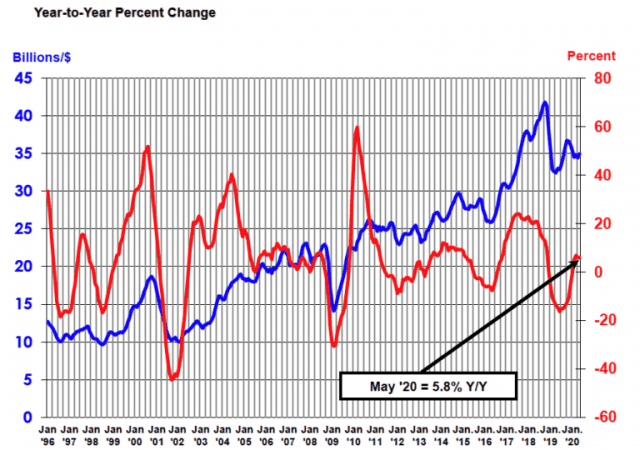The Semiconductor Industry Association (SIA) today announced worldwide sales of semiconductors were $35.0 billion in May 2020, an increase of 5.8 percent from the May 2019 total of $33.0 billion and 1.5 percent more than the April 2020 total of $34.4 billion.
Semiconductors
CyberOptics Unveils WX3000 Metrology and Inspection System for Semiconductor Wafer-Level and Advanced Packaging at Virtual SEMICON West
CyberOptics Corporation (NASDAQ: CYBE), a leading global developer and manufacturer of high-precision 3D sensing technology solutions, will unveil the new Multi-Reflection Suppression (MRS)-enabled 3D and 2D WX3000 Metrology and Inspection systems for wafer-level and advanced packaging applications at the virtual SEMICON West show, July 20-23rd.
Mitsubishi Electric Develops Accurate Circuit Simulation Technology for SiC-MOSFETs
Mitsubishi Electric Corporation (TOKYO:6503) announced today that it has developed a highly accurate Simulation Program with Integrated Circuit Emphasis (SPICE) model to analyze the electronic circuitry of discrete power semiconductors.
Novel “Dual-Resonant Method” in 2D Materials Can Spur Advances in the Field of Photonics
A team of researchers at Daegu Gyeongbuk Institute of Science and Technology (DGIST), led by Professor J.D. Lee, developed a novel mechanism to maximize the efficiency of photon conversion in 2D materials.
Porous Graphene Ribbons Doped with Nitrogen for Electronics and Quantum Computing
A team of researchers led by the physicist Professor Ernst Meyer of the University of Basel and the chemist Dr. Shi-Xia Liu from the University of Bern have succeeded in producing the first graphene ribbons whose crystal lattice contains both periodic pores and a regular pattern of nitrogen atoms.
Comprehensive Optical Wafer Testing for μLEDs at a Single Test Station
μLEDs are renowned for being an exacting new display technology. They are smaller than 100 micrometers and have exceptional optical properties that enable the manufacture of displays with a broad color gamut, high contrast and extremely high resolution.
SweGaN Establishes Corporate Headquarters in New Facility
SweGaN AB, manufacturer of GaN-on-SiC epitaxial wafers based on unique epitaxial growth technologies for telecom, satellite, defense and power applications, announced they have relocated their headquarters to a new facility in Linköping, Sweden
Imec and GLOBALFOUNDRIES Announce Breakthrough in AI Chip, Bringing Deep Neural Network Calculations to IoT Edge Devices
Imec, a world-leading research and innovation hub in nanoelectronics and digital technologies, and GLOBALFOUNDRIES (GF), the world’s leading specialty foundry, today announced a hardware demonstration of a new artificial intelligence chip.
Virtual SEMICON West 2020 to Gather Industry Leaders, Visionaries to Highlight Opportunities for Stronger Preparedness for Global Challenges
Better readiness for future global shocks through technology innovation will come into sharp focus at the Virtual SEMICON West 2020, July 20-23, as more than 150 semiconductor industry visionaries and government leaders gather for keynotes, fireside chats and executive panels on opportunities for improving responses to worldwide challenges.
The AxSEAM Scanner Simplifies Longitudinal Seam Weld Inspection
Using Olympus’ new AxSEAM scanner, inspectors can easily set up and inspect long seam welds, enabling them to work more independently in the field. Along with the OmniScan™ X3 flaw detector, the scanner is an integral part of the company’s portable phased array ultrasonic testing inspection solutions targeting longitudinal weld inspection on pipes and pressure vessels.
